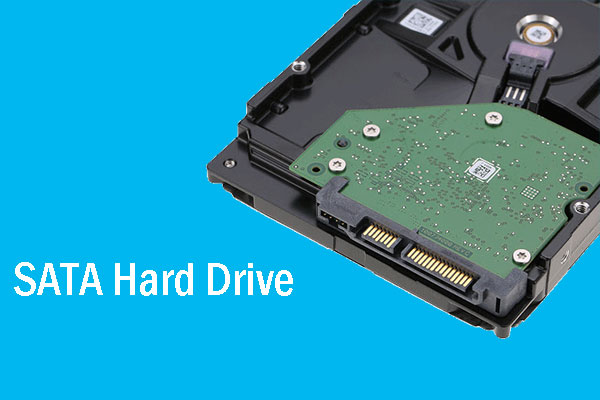SATA is one of the most widely used interfaces in modern technology. In this post from MiniTool, you will learn about SATA speed (including SATA 1, 2 and 3) and get some further information about SATA and SATA SSD.
About SATA
SATA refers to Serial AT Attachment. It is a computer bus interface that connects host bus adapters to mass storage devices such as hard disk drives (HDDs), optical drives (CD/DVD), and solid-state drives (SSDs), according to Wikipedia.
Since its introduction in 2000, SATA has been widely used in modern technology and employed in various desktop and laptop computers. Nowadays, it has become the standard and predominant interface for our storage devices, replacing the earlier PATA (Parallel AT Attachment) interface.
Why does SATA interface enjoy such a high popularity in our society?
On the one hand, SATA requires less cable size and cost than PATA interface, with only seven conductors instead of 40 or 80. On the other hand, SATA is designed with a flexible port which enables users to connect to various device with ease. More importantly, it provides faster data transfer rate through higher signaling rates, which is a critical factor to consider for both users and manufacturers.
How much do you know about SATA speed or SATA data transfer rate? Just keep reading to get further explanations.
Related article: SATA vs. IDE: What Is the Difference?
SATA Speed
To meet various and changing user demands, SATA has been revised and updated for several times. Since 2003, it has experienced 3 major revisions and each revision has made a great breakthrough in the SATA data transfer rate.
SATA 1 Speed
SATA 1, also known as SATA 1.5 Gbit/s, is the first generation of SATA interfaces and was released in 2003. Its actual uncoded transfer rate is 1.2 Gbit/s (150 MB/s), and it supports the communication rates of up to 1.5 Gbit/s. However, SATA 1 don’t support Native Command Queuing (NCQ).
SATA 2 Speed
SATA 2, also known as SATA 3 Gbit/s, is the second generation of SATA interfaces and was released in 2004. SATA 2 runs at the transfer rate of 3 Gbit/s, with a bandwidth throughput of 2.4 Gbit/s (300 MB/s) which doubles that of SATA 1. In addition, SATA 2 introduced Native Command Queuing and is backward compatible with SATA 1.
SATA 3 Speed
SATA 3, also known as SATA 6 Gbit/s, is the most recent generation of SATA and the full version was released in 2009. SATA 3 communicates at the rate of up to 6 Gbit/s, and its bandwidth throughput is 4.8 Gbit/s (600MB/s) which doubles that of SATA 2. SATA 3 is backward compatible with both SATA 1 and SATA 2.
Apart from these 3 major revisions of SATA, there are some other minor sub-revisions and we will give no more details. Of course, the SATA speed mentioned in this part is theoretical value, as the actual SATA data transfer rate might be slower due to various external factors.
SATA 2 vs SATA 3
SATA 2 and SATA 3 are used more often than SATA 1, and some users are wondering the differences between these two SATA versions. Besides their data transfer rate, there are some other differences indeed.
SATA 2 and SATA 3 are compatible with each other and both provide backward compatibility to function on SATA 1 interfaces. However, because of the speed limitations of the port, the maximum data transfer speed of the drive with SATA interface will be reduced.
For example, if you have an SSD with SATA 3 disk interface and connect it to a corresponding SATA 3 port, you might get the maximum speed of 6 Gbit/s. You can also connect the SSD to SATA 2 port and it can be recognized, but the read-write speed rate of the SSD will be reduced to a lower level.
SSD SATA 2 vs SATA 3 User Experience
Is there a noticeable difference in user experience between SATA 2 and SATA 3 for SSDs?
This is a popular question that has been discussed by plenty of users on the forum. Actually, there’s no discernible difference between SSD SATA 2 and SATA 3 from a subjective user perspective.
You might get great improvement in performance after upgrading HDD to SSD, but it not worth upgrading platform just to get SATA 3. As you can see in this post, the SATA 2 speed is already satisfying to meet common requirements of data transferring in our daily life.
High data transfer data of SATA 3 might be attractive for you consumers, but you might not get a noticeable performance improvement. Of course, for those who require strong sequential performance, it might be better to use SSD SATA 3.


User Comments :